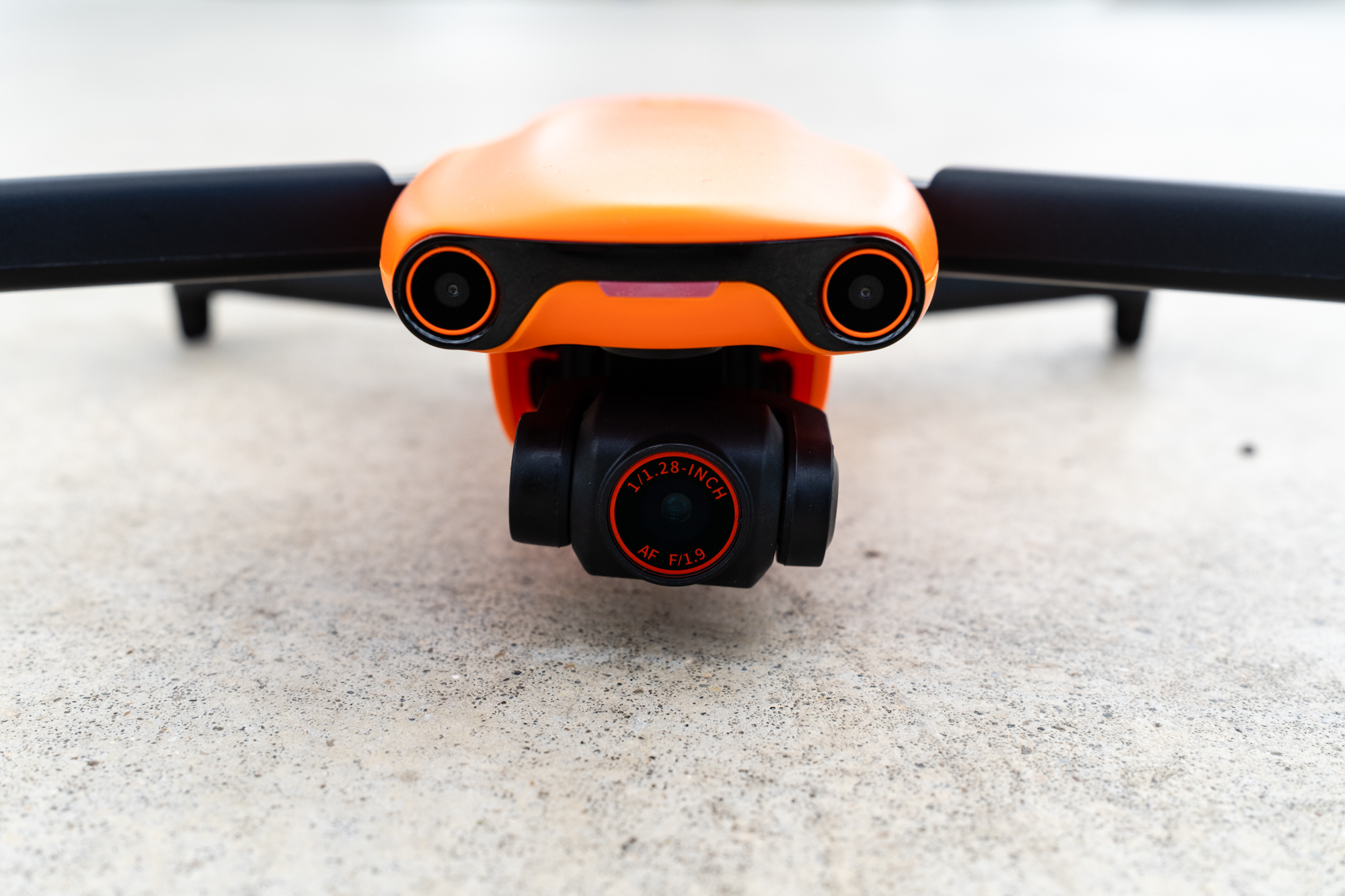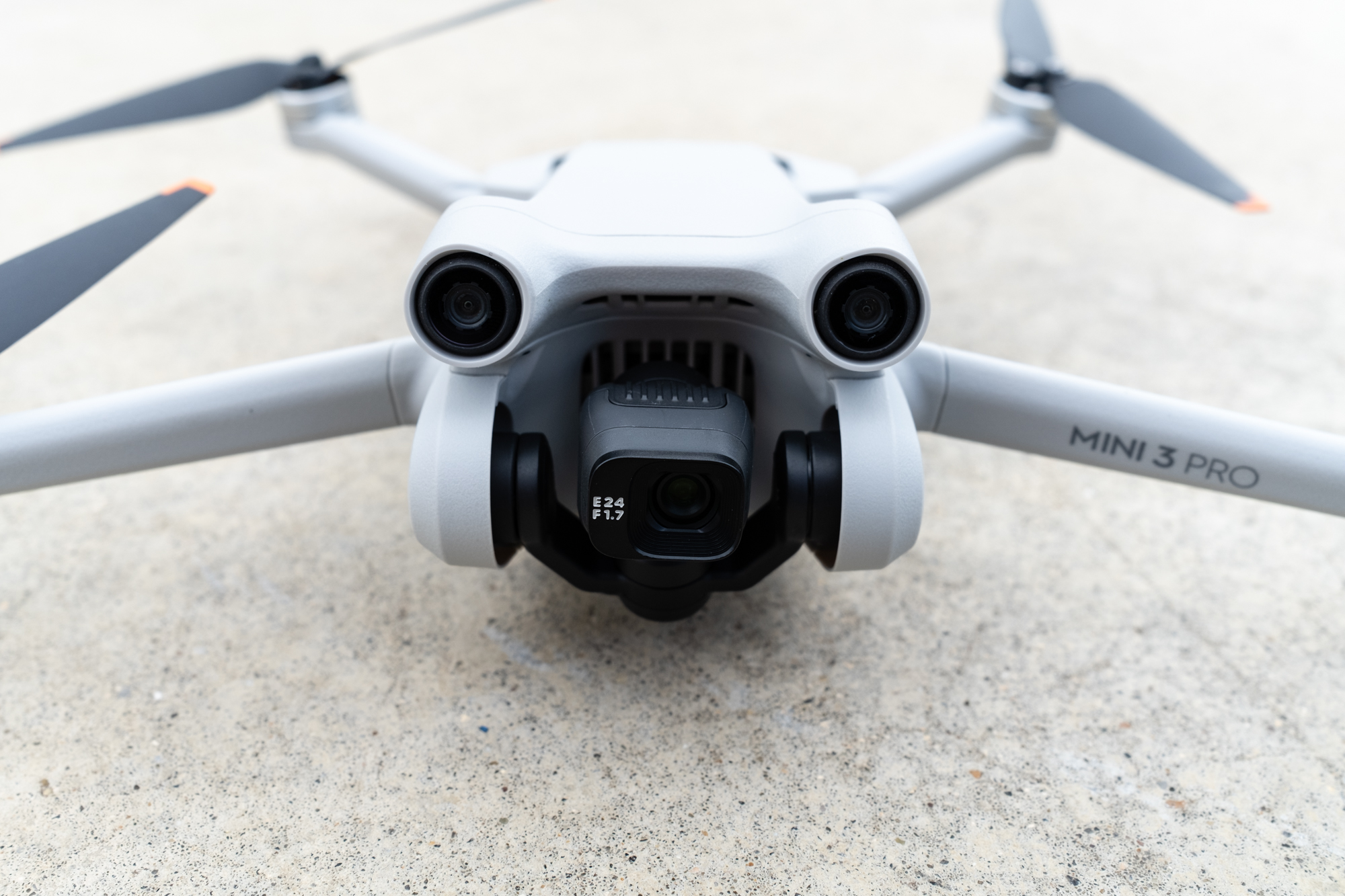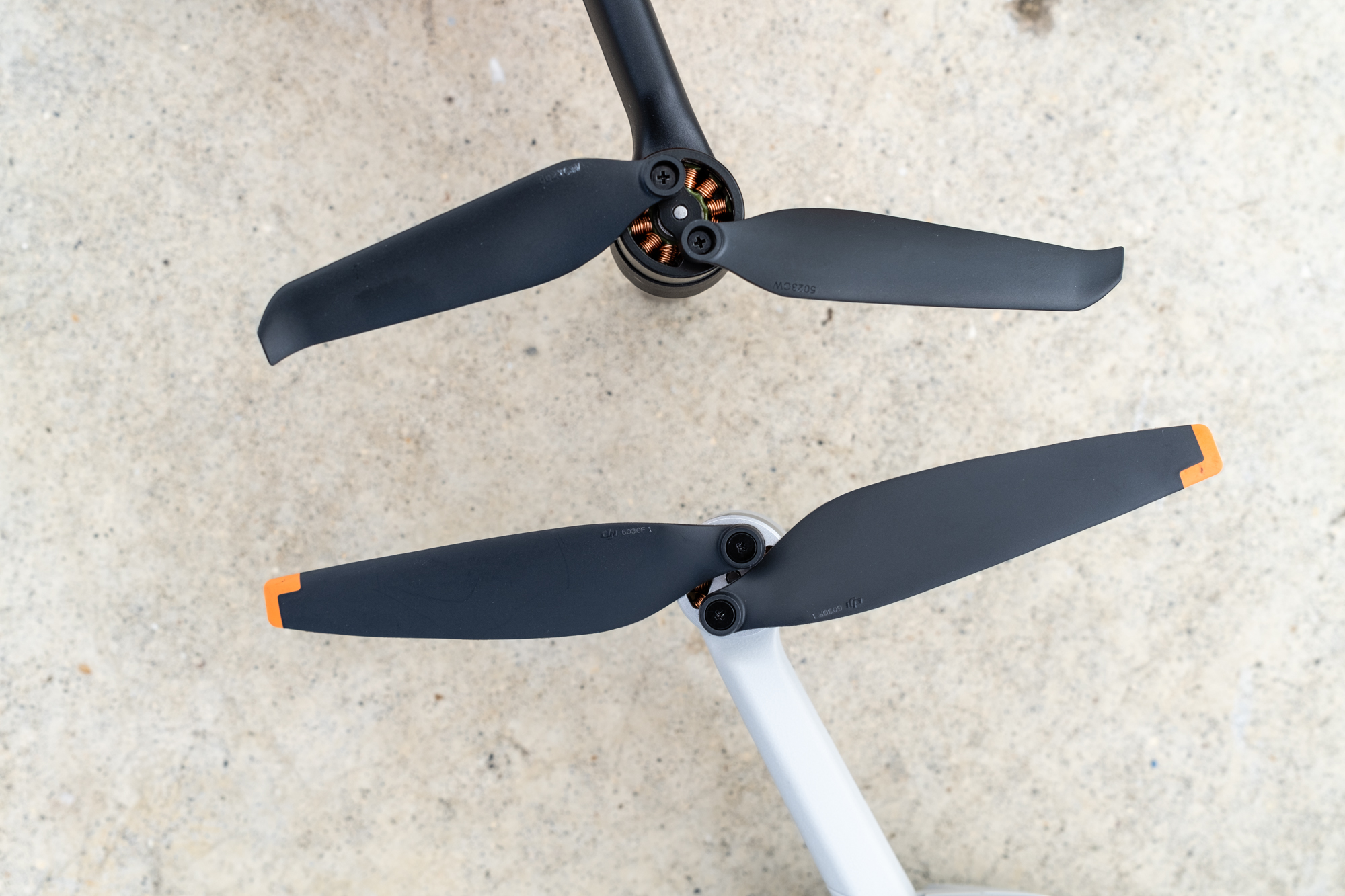DJI Mini 3 Pro vs Autel Evo Nano+: which is the best compact drone?
DJI and Autel's impressive compact drones go head-to-head

The battle of the small but mighty sub-250g drones has begun. With two impressive models competing for the coveted position of the best drone in this category, the DJI Mini 3 Pro and Autel Evo Nano+, drone fans have never had more choice.
This weight class was once dominated by DJI, with the original DJI Mavic Mini released in 2019 followed by the DJI Mini 2 in 2020. But in January 2022, Autel released the first two 249g drones to feature collision avoidance, automated flight patterns and other advanced features that are more commonly seen in larger and more expensive drones.
The tide has certainly changed, and with the release of the Autel Evo Nano+ alongside the more recent release of the DJI Mini 3 Pro, the competition has intensified. For drone fans, that can only be a good thing – competition drives innovation, and the sub-250g drone category is hotter than ever before.
But which one of these two drones is the best? We've flown both of them side-by-side in a range of tests to bring you the answer.
DJI Mini 3 Pro vs Autel Evo Nano+: pricing and availability
- Both drones were released in 2022
- They both have similar, mid-range price tags
- The Mini 3 Pro has two controller options
It's shaping up to be an exciting year in the world of drones with two advanced, sub-250g models released within the first five months of the year. The Autel Evo Nano+ was launched in January 2022, while the DJI Mini 3 Pro was released in May 2022.
The Autel Evo Nano+ is available in two kits with the Standard Bundle costing $899 / £719 / AU $949. This includes the drone, a controller, one battery, a spare pair of propellers and other accessories. The Nano+ Premium Bundle comes with everything in the standard one, but also includes two additional batteries, extra pairs of propellers, a power adaptor, a battery charging hub and a propeller holder, all of which costs $1049 / £859 / AU $1099.

The Mini 3 Pro is available in three kits: the first is for the Mini 3 Pro without a controller, which costs $669 / £639 / AU $989 and is aimed at DJI fans who already own a compatible controller. The second kit includes a DJI RC-N1 controller and costs $759 / £709 / AU $1119, while the third kit comes with the impressive new DJI RC Smart Controller and costs $909 / £859 / AU $1299.
A Fly More Bundle is also available separately and includes two extra batteries, a battery charging hub, extra propellers and a shoulder bag for $189 / £159 / AU $259. A Fly More Kit Plus with higher capacity Intelligent Flight Battery Plus instead of standard batteries is also available in the United States for $249 and in Australia for AU $359 but is unavailable in Europe.
DJI Mini 3 Pro vs Autel Evo Nano+: design and controller
- Both drones have a compact, folding design
- They both weigh in at just 249g
- A new DJI RC controller is available for the Mini 3 Pro
Despite their similar weights, these two drones look quite different, with the Mini 3 Pro being slightly larger. Where the Nano+ has short legs attached to the propeller arms, the Mini 3 Pro lands on small feet at the bottom of the airframe at the front and back.
Both drones could easily fit into a large jacket pocket, a lens compartment in your camera bag or in the dedicated case that comes as part of the Premium Bundle for the Nano+ and the Fly More Bundle for the Mini 3 Pro.
The Mini 3 Pro features significantly larger propellers than the Nano+, which are quieter in flight and provide more power. Another key design difference is that the Nano+ is available in four colors, while the Mini 3 Pro only comes in light grey. Autel gives you the slightly more exciting option of choosing between Classic Orange, Deep Space Grey, Blazing Red and Arctic White.

When it comes to controllers, DJI fans will be pleased to hear that there are two options available. One is the standard DJI RC-N1, which has a telescopic phone holder at the top for attaching a smartphone via a cable that can be stowed within the holder. The thumb sticks can also be removed and stowed away in rubberised sections at the bottom. The second controller option is the new DJI RC, which features a 5.5-inch touchscreen with a 700-nit brightness.
For the Nano+, the controller looks a little like an Xbox controller but with a large telescopic phone holder at the top. This doesn’t fold down as small as the DJI equivalent, although it’s quicker and easier to use. Your smartphone connects via a cable, but there’s nowhere on the controller itself to store the cable or the detachable thumb sticks, so you have to find somewhere safe to store them.
All of the controller options for both drones work extremely well, providing both a comfortable feel and reliable control of the drones. But the DJI RC controller is undoubtedly the best of the three.
DJI Mini 3 Pro vs Autel Evo Nano+: flight features
- Both drones offer collision avoidance
- Both drones can capture 48MP+ images
- The Mini 3 Pro camera helpfully rotates 90 degrees
Up until this year, collision avoidance was unavailable in sub-250g drones, but that all changed with the Nano+ and its sibling the Nano.
These were the first drones in the category to offer this feature, but it wasn’t long until the Mini 3 Pro was launched with the same handy powers. This in turn provides two further features that we'll discuss later on.

The Nano+ provides an advanced collision avoidance system using three-way binocular vision sensors on the front, bottom and rear of the drone. This is highly sensitive and slows the drone before stopping completely when obstacles are detected. It’s much more sensitive than the DJI version and perhaps more suited to absolute beginners who need peace of mind.
The Mini 3 Pro, meanwhile, uses a tri-directional obstacle sensing system with front, rear and downward facing wide-angle sensors, alongside Advanced Pilot Assistance Systems 4.0 (APAS 4.0) that allows you to set collision avoidance to brake when an obstacle is detected, fly around obstacles or it can be turned off.
This is much better for flying in complex environments than the Nano+ collision avoidance, although flight is much smoother on both drones when it's turned off.

Alongside collision avoidance, both drones offer automated flight patterns for capturing professional-looking video with ease.
Another feature that comes off the back of collision avoidance is subject-tracking. The Mini 3 Pro offers two options for tracking moving and static subjects while the drone flies autonomously, and a third for manual drone control while the camera tracks a predefined subject.
The Nano+ is advertised as having subject tracking capabilities, but this will be delivered in a future firmware update so couldn’t be tested.
DJI Mini 3 Pro vs Autel Evo Nano+: flight performance
- DJI Mini 3 Pro offers slightly longer flight times
- Both drones offer similar flight modes
- The Mini 3 Pro provides better wind resistance
Small, 249g drones are undoubtedly slower, less powerful and have a shorter battery lives than their larger counterparts. But it’s their highly portable nature that provides ample compensation. Even though they’re less capable in most areas than larger drones like the DJI Mavic 3, they’re still extremely able performers.
Both drones feature three flight modes, albeit with different names. These allow for slower, smoother and more cinematic video footage, and include a standard mode that’s used most of the time and a faster mode where collision avoidance is turned off.

In the fastest mode, called Sport by DJI and Ludicrous by Autel (Spaceballs movie fans may appreciate the latter), the Mini 3 Pro can reach speeds of up to 35.7mph while the Nano+ can achieve speeds up to 33mph.
This is, without a doubt, impressive for two drones that can sit on the palm of your hand when folded. Both drones are also rated to fly in winds of up to around 24mph, but in this area the slightly more powerful Mini 3 Pro is the better performer in our experience.

In wind gusts of over 20mph, the Nano+ can struggle when flying into the wind and it can be necessary to lower altitude and take a zig-zag route back to the take-off site. Still, it isn't recommended to fly these drones in stronger winds, and if that's something you need, then a more powerful drone would make more sense. Both drones are, however, steady in the air and their respective gimbals work effectively to capture smooth video footage.
Battery life and flight times are impressive when you consider the tiny batteries both models use. But the Mini 3 Pro’s 2453mAh battery, combined with its larger propellers and aerodynamically designed propeller arms, does provide extended flight times.
The Nano+ uses a 2250 mAh battery that’s advertised to last up to 28 minutes, but in average conditions will last around 20 minutes. The Mini 3 Pro flight times are advertised at up to 34 minutes, although this sits in the region of 25 minutes in reality.
DJI Mini 3 Pro vs Autel Evo Nano+: video and image quality
- Both drones can shoot video 4K video in flat color profiles
- They both feature similar resolutions and apertures
- The Mini 3 Pro camera rotates for portrait video and photos
It’s safe to say that both of these drones produce excellent image quality overall and you won't be disappointed with either. But let’s dive into the finer points and split some hairs to see how they compare.
The Nano+ camera features a 12.5MP 1/1.28-inch sensor with an equivalent focal length of 23mm and an f/1.9 aperture. But the Mini 3 Pro slightly trumps this. It has a 21.1MP 1/1.3-inch sensor and an equivalent focal length of 24mm with an f/1.7 aperture, plus the ability to rotate the camera 90 degrees to shoot in portrait or landscape format.
When it comes to image quality for photos, both provide excellent high ISO noise handling, but with a small amount of sharpness fall off towards the edges of the frame. Both drones also produce chromatic aberration along certain subject edges, although this is more effectively fixed in Adobe Lightroom with the Nano+.
The Nano+ also suffers from vignetting, and white balance comes in a little on the cold side, but both of these can be easily fixed in Lightroom.
Both cameras can also shoot at a higher resolution, which can be useful. The Nano+ is able to capture 50MP JPEGs, while the Mini 3 Pro can shoot 48MP images in both JPEG and raw. You can increase the size of Nano+ raw files using Adobe Super Resolution in Lightroom and Adobe Camera Raw, but hopefully the ability to capture 50MP files in raw will be made possible with a future firmware update.






When it comes to image quality for videos, both drones produce excellent results that are superior to their photo quality. This is most likely down to the centre of the sensor and lens being used to capture video. The Mini 3 Pro can capture video in 4K up to 60fps, 2.7K up to 60fps and FHD up to 120fps, with a maximum bitrate of 150Mbps in Normal and D-Cinelike color profiles.
The Nano+ can capture video in 4K up to 30fps, 2.7K up to 30fps and FHD up to 60fps with a maximum bitrate of 100Mbps in Standard and D-Log color profiles. So, both are extremely similar once again. With either drone, ND filters are essential when shooting video in daylight to allow a correct shutter speed for smooth and natural motion to be captured, simply because of their fast apertures.
Verdict
The DJI Mavic Mini 3 Pro and the Autel Evo Nano+ are extremely similar in terms of their performance, features, specs, video quality and price. When it comes to image quality for photos, the Mini 3 Pro is slightly better than the Nano+ with improved high ISO handling and better edge sharpness, but not to a degree that it blows the Nano+ away.

The Mini 3 Pro also provides slightly longer flight times per charge and better wind resistance thanks to its greater power. But the biggest upgrade this drone offers has to be the rotating camera and the option to purchase the kit with the DJI RC Smart Controller.
The DJI RC makes settings up and flying so much quicker and easier than with a standard controller, while its screen is brighter and more comfortable to view than a smartphone screen.
Overall, the DJI Mini 3 Pro is the slightly better drone, but slightly is the optimal word here – in our experience, it isn't leaps and bounds better. And although the Mini 3 Pro has the overall edge, Autel has been making incremental improvements and adding new features with firmware updates, so there is scope for further improvements over time.
We'll revisit both drones when this happens and update this feature with the results, but for now our nod goes to the DJI Mini 3 Pro.
Get daily insight, inspiration and deals in your inbox
Sign up for breaking news, reviews, opinion, top tech deals, and more.
James Abbott is a professional photographer and freelance photography journalist. He contributes articles about photography, cameras and drones to a wide range of magazines and websites where he applies a wealth of experience to testing the latest photographic tech. James is also the author of ‘The Digital Darkroom: The Definitive Guide to Photo Editing’.
